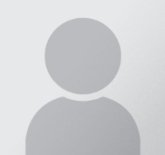Avant-première : plan de cours pour le hockey en salle

Publié précédemment dans le volume 81, numéro 3
The following article is an excerpt from Floor Hockey Approached Through the "Teaching Games for Understanding" Model, by Greg Rickwood. The full chapter focuses on individual and team tactics associated with gaining and re-acquiring territorial advantages in floor hockey. This excerpt includes part of the introduction and a lesson plan for technical skill development, with a focus on maintaining possession of the puck.
Introduction
The skills and tactical insights students acquire from learning to play floor hockey can extend beyond game play to real-world problems. Teaching games for physical and social understanding, not just the game itself, can produce individuals who are physically and socially literate, capable of solving problems in multiple environments and across life-long activities (Butler & Robson, 2012; Mandigo & Corlett, 2010).
[Chapter 17 of the book includes six lessons for a complete unit plan. The following is lesson 1 of that series.]
Lesson 1: Technical skills: Maintaining puck possession
- Main Focus: Protect and progress the puck towards opponent’s goal
- Skills: Stickhandling, passing and receiving, shooting
Focus for students
- Pass and receive the puck (stationary/in-motion)
- Propel the puck at the goal
- Maintain puck possession under defensive pressure
Introduction game
Equipment: Floor hockey sticks, pinnies, felt pucks, cones (poly spots)
Set up: Figure 1, Gated Community

Learner experiences
- In groups of two, one player attempts to stickhandle the puck through the defined gates (two pylons).
- Player without the puck protects the gates – if gains puck possession, s/he shoots it into an area where there are no gates.
- Goals awarded whenever the puck is stickhandled through any gate by offensive player.
- Not permitted to score on the same gate consecutively.
- After one minute, players reverse roles.
- Players with the most goals after four rotations wins.
Modifications
- Offensive players run through the gates with a beanbag while defending player tries to touch them before scoring.
- Reduce gate numbers.
- Reduce the playing space.
Decision making
- What skills and tactics were used to score?
- As defenders, what technical and tactical skills prevented goals?
Skill development
Equipment: Floor hockey sticks, pylons, felt pucks, poly spots, hockey nets (two)
Set up: Figure 2, Ya Got Skills?

Learner experiences
- Divide class into three teams.
- Passing zone: Students pass one puck from the starting pylon to the final pylon.
- Students remain beside their pylon after they pass the puck to the opposite pylon.
- When the student at the final pylon receives the puck, he or she will stickhandle the puck to the shooting line and shoot on the net.
- After the shot, students run to the opposite pylon and begin the process again. The student who took the shot travels to the starting pylon position to start the next sequence.
- Each team must pass and shoot as many pucks into the net within five minutes.
- Stickhandling zone: Same pattern as the passing zone. Replace the pass with stickhandling.
- The puck moves through the course until the last player receives the puck. He or she will stickhandle to the shooting line and shoot on the net.
- Students rotate positions and repeat the process for five minutes.
- Shooting zone: Each student has a puck and practices shooting (snap shots, wrist shots, backhand shots) against the wall. Students stand behind the shooting line (poly spots) and aim for various targets on the wall (such as wall markings, colour variations, etc.).
- After five minutes, teams rotate into a new skill zone until they’ve practiced in all three zones.
Culminating activity
Equipment: car tires, floor hockey sticks, felt pucks, pylons, poly spots
Set up: In groups of two or three, each person has a stick
Figure 3, Tire Me Out

Learner experiences
- Each pair defends one tire in the defined area.
- Students must shoot the puck against the opposing team’s tire.
- The puck can hit the tire at any angle outside the crease area, as defined by the teacher.
- Only defending team members can enter their crease.
- If the puck exits the playing area, the team that shot it out allows their opponents space to play it back into the playing area.
- Each game lasts seven minutes.
- Team with the least goals remains in the same playing area to await the winners from another playing area.
- If the game ends in a tie, the team that scored the first goal is the winner.
- If neither team scores, the team with the first shot on their opponent’s net wins.
Decision making
- How did your team position themselves with the puck? Without the puck?
- What technical skills were required to score goals? To prevent goals?
Modifications
- Every player must score at least once.
- Use large cones/benches as targets (goals).
- Decrease the time/space of individual games.
Democracy-in-action — Risk taking
The focus of lesson one is to maintain puck possession and score. Students are encouraged to take risks (i.e. overload the puck) that result in reward (goal) or consequence (scored upon). Students will explore the risks worth taking. Discussions here could include the notions of calculated risk, weighing the odds and playing it safe. When to take a risk depends on the context of the game, particularly the current score.
Check for learning
- What tactics were used to score/defend in Tire Me Out? What influenced your team’s positioning in the playing area?
- Did your team consider changing tactics when behind and/or leading in the game? If so, were there consequences?
- What areas of life do you take risks knowing that the consequences could be negative? Do you weigh the advantages and disadvantages of taking a risk (i.e. staying out past curfew) before you take this chance? Are some risks not worth taking because the consequences outweigh the advantages of risk-taking? Explain.
This manual is available in its entirety through Hockey Canada School Skills Academy online, at http://www.hockeycanada.ca/en-ca/Hockey-Programs/Schools.aspx, as of February, 2016.








